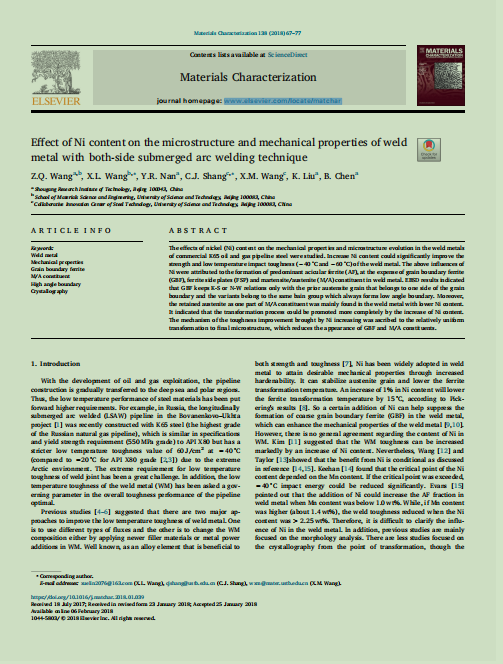The effects of nickel (Ni) content on the mechanical properties and microstructure evolution in the weld metals of commercial K65 oil and gas pipeline steel were studied. Increase Ni content could signifificantly improve the strength and low temperature impact toughness (−40 °C and −60 °C) of the weld metal. The above inflfluences of Ni were attributed to the formation of predominant acicular ferrite (AF), at the expense of grain boundary ferrite (GBF), ferrite side plates (FSP) and martensite/austenite (M/A) constituent in weld metal. EBSD results indicated that GBF keeps K-S or N-W relations only with the prior austensite grain that belongs to one side of the grain boundary and the variants belong to the same bain group which always forms low angle boundary. Moreover,the retained austenite as one part of M/A constituent was mainly found in the weld metal with lower Ni content. It indicated that the transformation process could be promoted more completely by the increase of Ni content. The mechanism of the toughness improvement brought by Ni increasing was ascribed to the relatively uniform transformation to fifinal microstructure, which reduces the appearance of GBF and M/A constituents.
